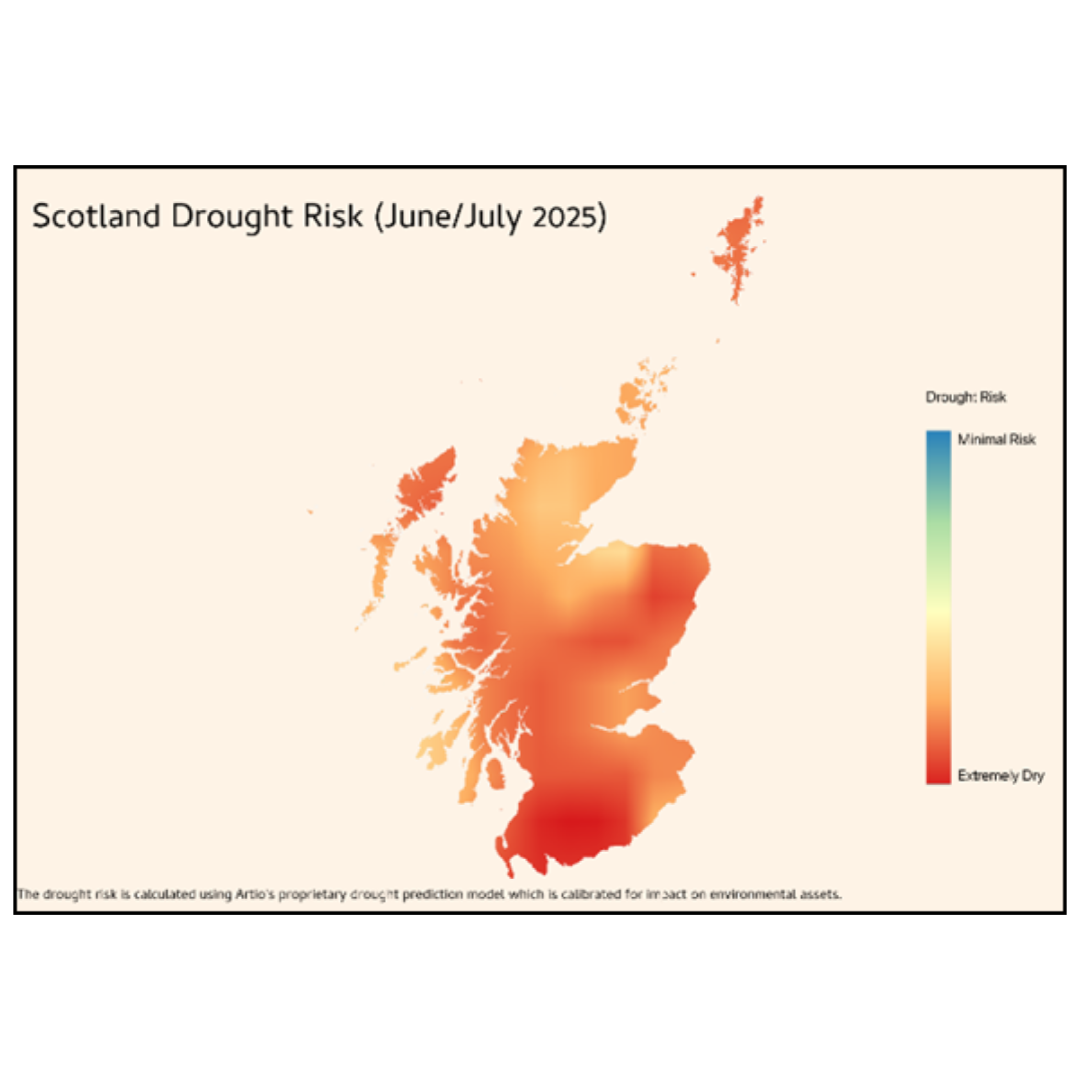New analysis pinpoints wildfire risks threatening Scotland’s woodlands
By Bilal Hussain
Artio maps wildfire hotspots to help protect hundreds of thousands of hectares of Scottish forests
Analysis offers critical insights for carbon project developers, with Barclays, Shell, and BrewDog amongst corporate offtakers of Scottish carbon credits
Integrating climate resilience into carbon project planning is increasingly vital as drier summers put forestry at greater risk
Integrating climate resilience into carbon project planning is increasingly vital as drier summers put forestry at greater risk
LONDON, 31st July 2025: Artio, a pioneering carbon insurance firm, has today released new analysis identifying areas of elevated wildfire risk in Scotland, providing vital insights for communities, local authorities and developers of carbon projects.
Scotland has emerged as the UK’s leading hub for nature-based and engineered carbon projects, with nearly 30 million tonnes of CO2e emissions expected to be prevented over the lifetime of projects under the leading Woodland and Peatland Carbon Code schemes.
Using a combination of drought modelling and fire spread analysis, Artio’s study highlights how reduced precipitation and prolonged dry spells during June and July 2025 have created pockets of extreme dryness across the country. When combined with environmental factors, such as wind direction and topography, these conditions significantly increase the likelihood of fire ignition by two-fold and the area that fires can spread by more than 30%.
A need for robust planning and risk management
In the village of Carrbridge in the Scottish Highlands, one of the areas identified by Artio as high-risk, multiple ignition points have been recorded. Inland from Inverness, these conditions contributed to a large wildfire that ultimately burned more than 11,000 hectares at the end of June and early July. Another high risk area is Galloway Forest Park in Dumfries and Galloway, which has a high likelihood of dryness coupled with an environment prone to fire ignition.
With thousands of hectares of active and planned carbon-focused land in Scotland, the analysis highlights the importance of integrating climate resilience into carbon project design, alongside contingency planning for communities and local authorities.
Bilal Hussain, Co-Founder and CEO at Artio, commented:
“Scotland plays a pivotal role in the UK’s carbon ecosystem, with its woodland and peatland projects providing vital natural climate solutions. However, for these projects to succeed and deliver long-term climate benefits, they must be underpinned by robust planning and proactive management.
By mapping where vulnerabilities are greatest, we can enable better decision-making, attract sustained investment and protect the communities that depend on them.”
Scotland’s role as a UK carbon hub
Scotland is positioned as a critical hub for the UK’s carbon ecosystem, attracting significant investment while supporting the country’s net zero goals. Major developers in Scotland’s carbon market include Scottish Woodlands and Forest Carbon, alongside other active players like Highlands Rewilding and estate-led schemes.
High-profile investments have been made by the likes of Barclays, Baillie Gifford, Shell and BrewDog in Scottish projects, reflecting strong cross-sector demand for woodland and peatland carbon assets.
Graphs showing visualisations of Artio’s analysis
Photo by Andrew Ridley on Unsplash


